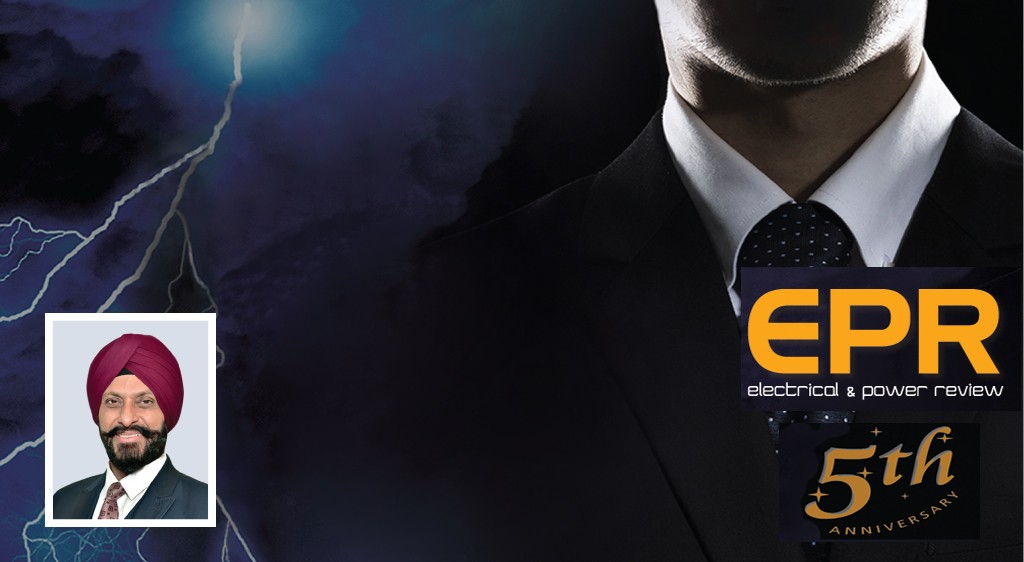Right environment to boost investment
By EPR Magazine Editorial November 28, 2017 4:27 pm IST
By EPR Magazine Editorial November 28, 2017 4:27 pm IST

Hartek Singh, Chairman and Managing Director, Hartek Group.
Government initiatives are bearing fruit
Significantly, India has transformed itself from a net importer of electricity to a net exporter of electricity, exporting around 5,798 million units in 2017. From ranking 99th at the global level in 2014 in terms of electricity accessibility ranking, India is at the 26th spot today. As, generation alone cannot drive the sector, appropriate measures have also been initiated in the power transmission sector, which has also witnessed impressive growth over the past three years. In line with the government’s “One nation, One price and One grid” initiative, the transmission sector recorded a 36 per cent increase in transmission capacity from 5,30,546 MVA in March 2014 to 7,22,949 MVA in March 2017. The transmission lines saw a 26 per cent increase from 2,91,336 circuit km (ckm) in March 14 to 3,66,634 ckm in March 17. The growth in the sector was aided by simultaneous reforms on the rural front under the NDA government’s flagship programme to provide electricity to all villages of the country. A rural electrification programme under Deendayal Upadhyaya Gram Jyoti Yojana (DDUGJY) announced in 2014 to connect un-electrified villages is on the right track with 13,123 villages electrified as on May 12, 2017. The government has now set a target of electrifying all villages by May 2018.
UDAY: The Game Changer
The UJALA scheme has also been a big success. Hartek Singh, Chairman and Managing Director, Hartek Group believes, “The biggest game changer in India’s power reforms story has been the UDAY scheme, aimed at affecting a turnaround of state distribution entities which were considered as the weakest link in the entire chain of power sector reforms.” Within three years, 27 states and UTs have joined this scheme for financial and operational turnaround. The scheme has already yielded savings of nearly Rs 12,000 crore to state power distribution companies.
The government has announced several initiatives to revive the power sector since the time it came to power. While revealing whether these initiatives have started delivering Singh explains, “The initiatives are bearing fruit, though the pace of solar power generation has slowed down a bit with the government not releasing many tenders in view of the declining tariffs. India’s power sector, which was marred by continuous shortages and lack of quality and steady supplies, has seen an unprecedented turnaround in the past three years. The ease of getting power at affordable rates is a result of focused reforms over the past three years in the power sector. Within three years, India’s total power capacity has increased by 31 per cent from 243 GW in March 2014 to 320 GW in March 2017. The conventional or coal-based power capacity has increased by 26 per cent from 214 GW in the past three years. Energy shortages in 2014 were 42,428 million units (4.2 per cent), which came down to 7,459 MU in 2017 (0.7 per cent). Similarly, peak energy shortage in 2014 was 6,103 MW (4.5 per cent), which came down to 2,608 MW (1.6 per cent) in 2017.”
UDAY aims to reduce cost in ecosystem of powerConducive business environment is a boost to investment
“The most positive development has been the creation of a conducive business environment, which has given a big boost to investment,” states Singh. There has been an increase in private participation, even in the transmission and distribution (T&D) domain. While the situation has vastly improved on the power generation front, T&D infrastructure is also coming up on a war footing. The thrust on rural electrification, ‘Power to All’ and solar energy will go a long way in improving the health of the industry. Higher spending on electrification will result in more orders for companies in the transmission sector and gradually improve the energy demand and plant load factor (PLF) levels for power generation entities to some extent. The increase in allocation under the integrated power development scheme is also a step in the right direction. “Together with the Deen Dayal Upadhyaya Gram Jyoti Yojana, it will bring grid-connected power to more villages. An additional 20,000 MW to be added in the second phase of solar park development scheme will give a huge impetus to solar power generation,” he adds.
Hartek registering a steady growth in the market
While briefing about company’s performance during the past one year, Singh says, “It has been a great year for us with all our five business units registering steady growth.” Hartek Group bagged 1,025-MW solar grid EPC orders in 2016-17, a phenomenal increase of 733 per cent as compared to its order size in the previous year. The company connected 340 MW of solar power to the grid in 2016-17, which comes out to be more than the combined figure of the previous three years. “Having connected about 600 MW of solar power to the grid so far, we were recently adjudged as the fourth largest EPC company in the solar domain by Mercom Capital,” claims Singh.
Taking its rooftop solar business division to the next level to tap the huge opportunities brought by the rapidly growing market for rooftop photovoltaic plants, the Hartek Group embarked on Hartek Solar, its new rooftop solar business vertical, a few months ago. Having executed 13.75-MW rooftop projects so far, the company has also been adjudged by Mercom Capital as one of the notable rooftop installers in the country with a 2 per cent market share.
We use cookies to personalize your experience. By continuing to visit this website you agree to our Terms & Conditions, Privacy Policy and Cookie Policy.